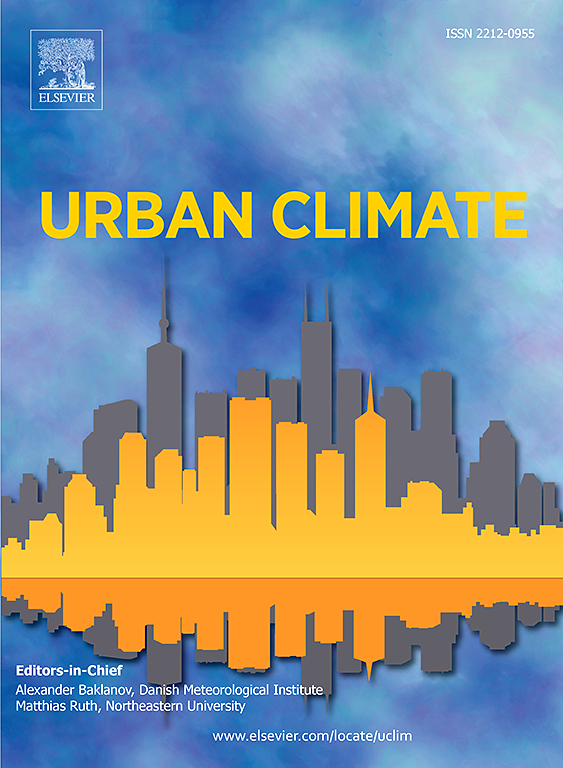Construction of a nested cold island network based on multiple urban scales: A study in Nanchang, China
IF 6
2区 工程技术
Q1 ENVIRONMENTAL SCIENCES
引用次数: 0
Abstract
Mitigating heat islands is a critical issue for many cities to improve urban environmental quality. Variations in topography, urban development patterns, and thermal environmental characteristics across different spatial scales lead to scale-dependent heat islands. The mitigation effects of various factors on urban thermal environments are also dependent on scales. However, existing studies on the construction of cold island networks have not adequately addressed the factor differences with scales. Therefore, this study used the random forest algorithm to explore the impact of various influencing factors on the urban thermal environment of Nanchang, China, across different spatial scales. Additionally, a multi-scale collaborative nested cold island network was constructed using the Morphological Spatial Pattern Analysis (MSPA). The results verified that the dependence of influencing factors with urban scale, especially regarding elevation and building index. In the nested analysis of the multi-scale cold island network, 13 cooling sources were identified, covering a total area of 40.707 km2, of which 9 sources exceed 1 km2. Moreover, 15 segments of nested cooling corridors were identified, totaling 21.275 km. The nested cooling sources and corridors are capable of exerting cold island effects across different scales and should be prioritized for protection. Overall, the construction of the nested cold island network promotes the understanding in developing cooling strategies from a multi-scale perspective and valuable insights into heat island mitigation.
基于多城市尺度的巢式冷岛网络构建——以南昌为例
缓解热岛是许多城市改善城市环境质量的关键问题。地形、城市发展模式和热环境特征在不同空间尺度上的变化导致尺度依赖性热岛。各种因素对城市热环境的缓解效果也依赖于尺度。然而,现有的关于冷岛网络建设的研究并没有充分考虑到因子与尺度的差异。因此,本研究采用随机森林算法,在不同空间尺度上探讨各种影响因素对中国南昌市城市热环境的影响。此外,利用形态空间格局分析(MSPA)构建了多尺度协同嵌套冷岛网络。结果验证了影响因素与城市规模的相关性,尤其是高程和建筑指数。在多尺度冷岛网络嵌套分析中,共识别出13个冷源,总面积40.707 km2,其中超过1 km2的冷源有9个。此外,还确定了15段巢式冷却走廊,总长度为21.275 km。巢式冷源和廊道具有不同尺度的冷岛效应,应优先保护。总体而言,巢式冷岛网络的构建促进了从多尺度角度制定冷却策略的理解,并为热岛缓解提供了宝贵的见解。
本文章由计算机程序翻译,如有差异,请以英文原文为准。
求助全文
约1分钟内获得全文
求助全文
来源期刊

Urban Climate
Social Sciences-Urban Studies
CiteScore
9.70
自引率
9.40%
发文量
286
期刊介绍:
Urban Climate serves the scientific and decision making communities with the publication of research on theory, science and applications relevant to understanding urban climatic conditions and change in relation to their geography and to demographic, socioeconomic, institutional, technological and environmental dynamics and global change. Targeted towards both disciplinary and interdisciplinary audiences, this journal publishes original research papers, comprehensive review articles, book reviews, and short communications on topics including, but not limited to, the following:
Urban meteorology and climate[...]
Urban environmental pollution[...]
Adaptation to global change[...]
Urban economic and social issues[...]
Research Approaches[...]
 求助内容:
求助内容: 应助结果提醒方式:
应助结果提醒方式:


